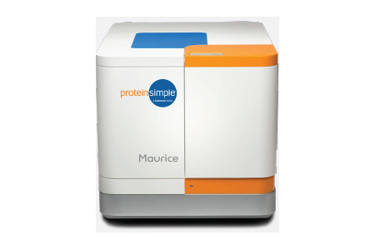Comparing SDS-PAGE With Maurice CE-SDS For Protein Purity Analysis

The accurate and quantitative analysis of product purity is a fundamental component of effective development of a biotherapeutic protein. But without consistent techniques and high-quality, reproducible results, it is difficult to correctly assess the product’s efficacy and/or safety, potentially delaying, even jeopardizing, its approval.
For years, scientists have used sodium dodecyl sulfate-polyacrylamide gel electrophoresis (SDS-PAGE) as a part of lot release, stability testing, batch-tobatch consistency and purity analyses. But the gel-based technique is self-limiting in terms of sensitivity, reproducibility and its semi-quantitative nature. These shortcomings have led to the emergence of capillary electrophoresis (CE-SDS) as a more appropriate, analytical and instrument-based replacement that is increasingly being adopted in biopharmaceutical workflows. CE-SDS possesses high separation power, affords accurate quantitation and can be automated to streamline purity analyses of both intact and reduced biotherapeutic proteins. In this application note, we compare Maurice™ CE-SDS with SDS-PAGE in parallel, using a standard and a commercially available therapeutic monoclonal antibody (mAb) under varying conditions. The comparative results highlight the advantages of Maurice CE-SDS over SDS-PAGE for routine product purity characterization.
Request A Quote
Get unlimited access to:
Enter your credentials below to log in. Not yet a member of Bioprocess Online? Subscribe today.
